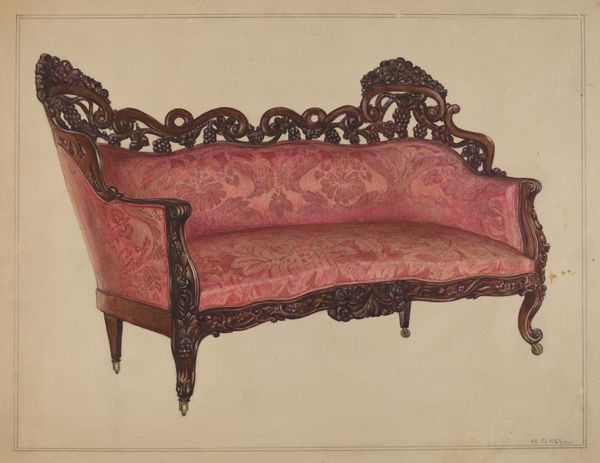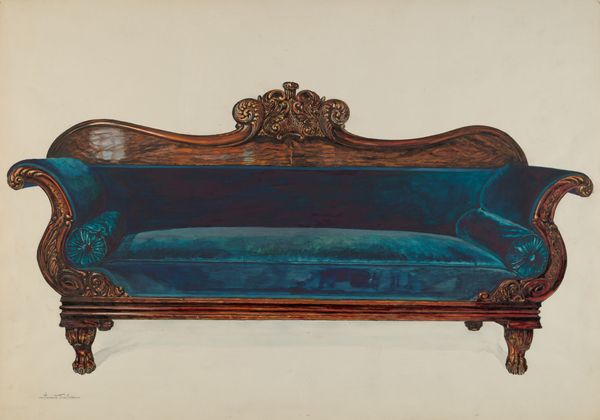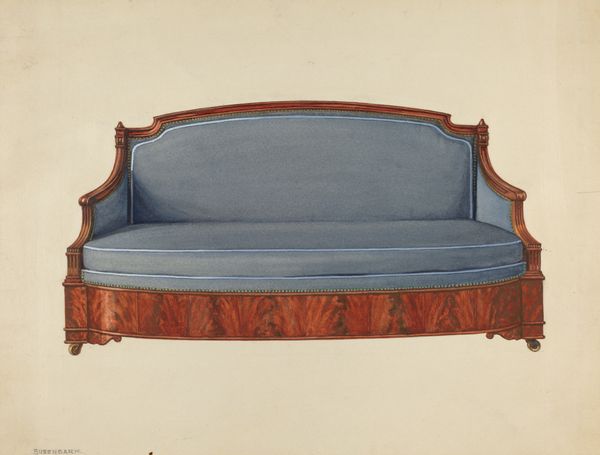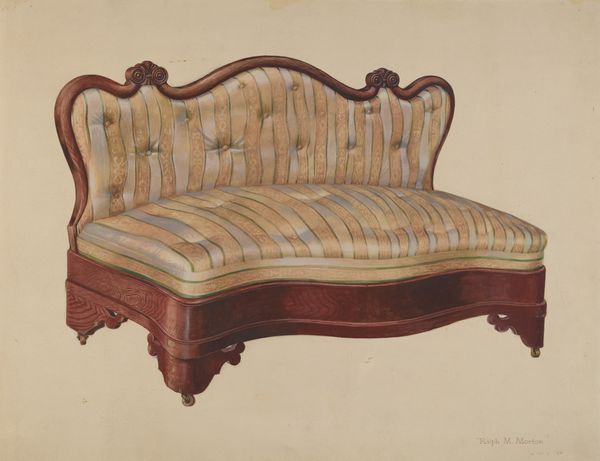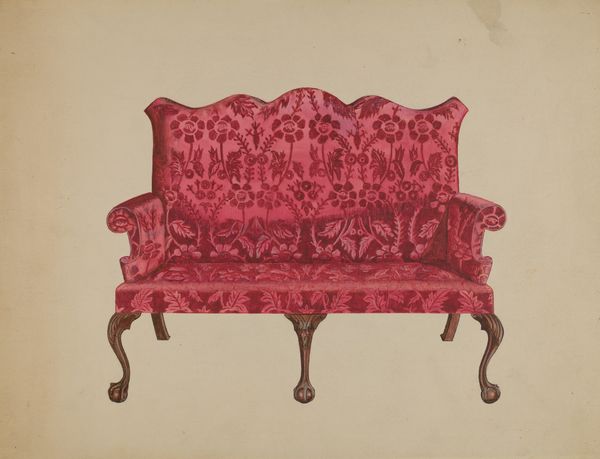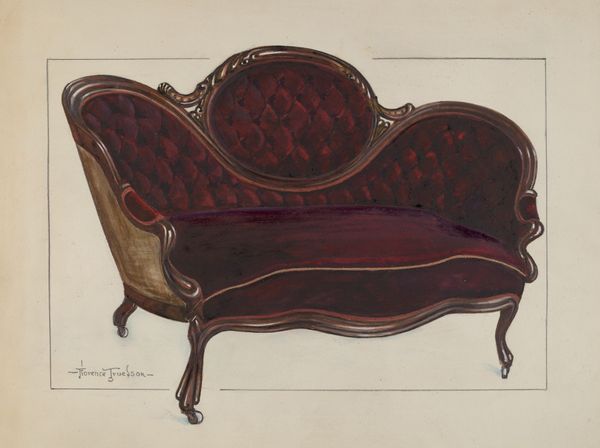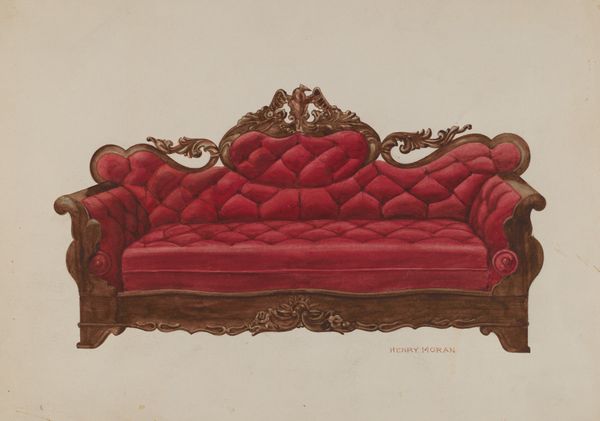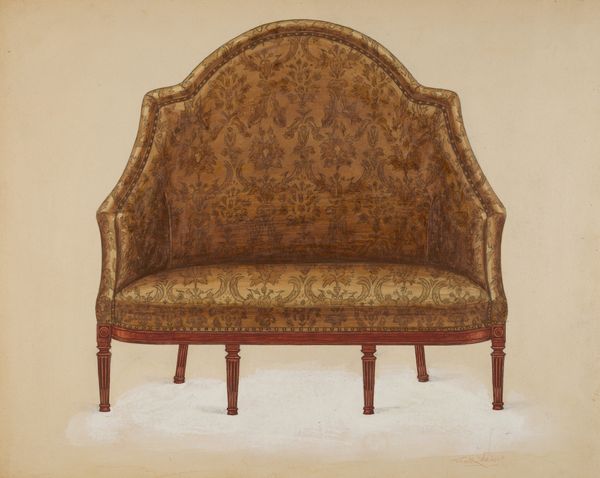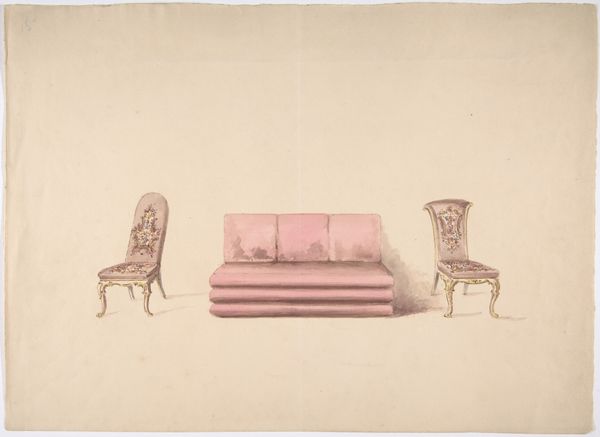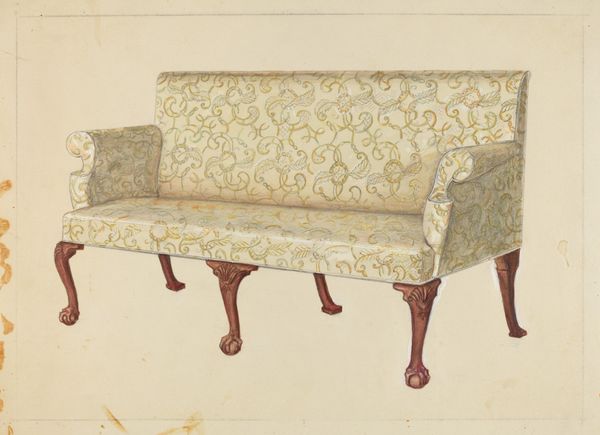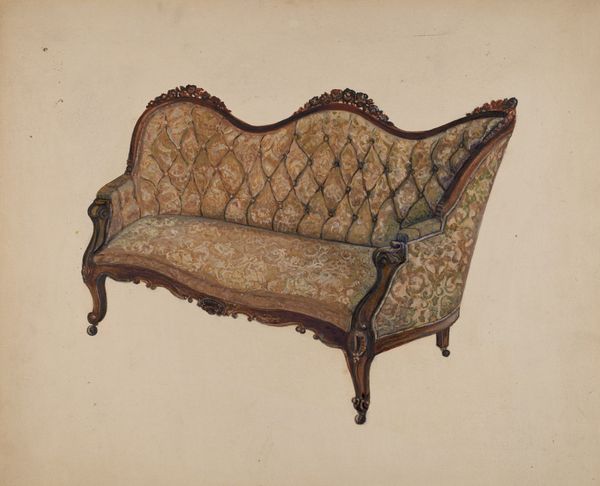
drawing, painting, oil-paint
#
drawing
#
painting
#
oil-paint
#
oil painting
#
genre-painting
#
realism
Dimensions: overall: 22.9 x 29.1 cm (9 x 11 7/16 in.) Original IAD Object: 44 3/4"high at ends; 79 1/2"long; seat: 12 3/4"high
Copyright: National Gallery of Art: CC0 1.0
Editor: Here we have Henry Granet’s "Sofa," painted in 1936, seemingly with oils. The first thing that strikes me is how deliberately *un*inviting it looks! It's so formally posed, almost defiant. What do you see in this piece? Curator: I see more than just a piece of furniture; I see a loaded symbol of domesticity and social expectations, especially for women in the 1930s. Consider the date. The Depression was in full swing. The elaborate ornamentation and the formality you mention feel like a coded commentary. Editor: Coded? How so? Curator: Isn’t there something inherently gendered about a sofa? It speaks to a space of leisure, a place where women might receive guests, perform their domestic roles. The stiffness suggests that even within the private sphere, one was still performing for a certain societal script. Do you get a sense of the sitter and sitter's potential unease with prescribed societal roles? Editor: I hadn’t considered it in terms of performance. The almost aggressive formality now does suggest a kind of resistance, maybe a subtle critique of those expectations. But if that’s true, where is the artist taking a stand? Is the artist questioning something, or complicit? Curator: The very act of depicting this seemingly innocuous object invites questions about what we value, what spaces we deem "feminine," and what roles we expect individuals to play within them. The painting acts as a mirror, reflecting our own biases. Ultimately it leaves you and me with many more questions. Editor: That's fascinating. I will certainly never look at a sofa the same way. I see a deeper layer of questions of cultural values. Thanks for sharing your perspective.
Comments
No comments
Be the first to comment and join the conversation on the ultimate creative platform.
